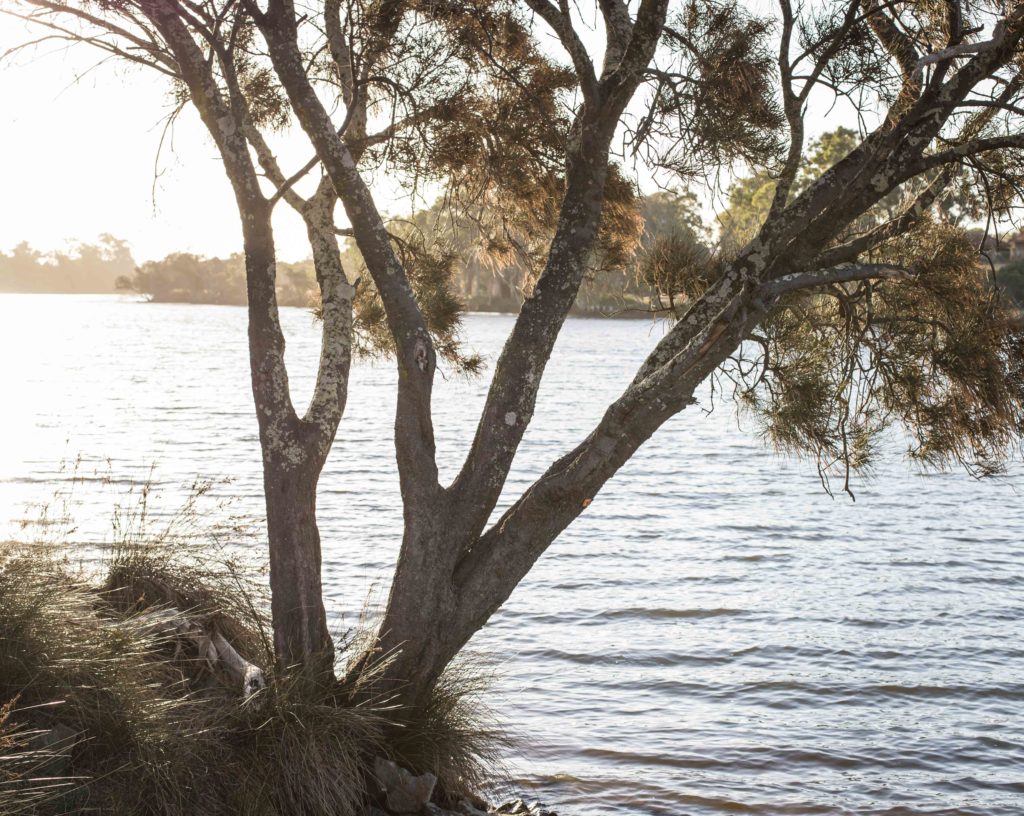The second summer, or the season of adolescence
Bunuru generally falls over the February-March calendar period and is the hottest time of the year in Nyungar boodja (country), with little to no rain. Hot easterly winds continue, with a cooling sea breeze most afternoons if you’re close to the coast.
Therefore this was, and still is, a great time for living and fishing by the coast, rivers and estuaries. Freshwater foods and seafood traditionally made up major parts of the diet during this time of year and still do today. We are never far from the Ngarngungudditj Walgu (Collie River) or the ocean at the moment, swimming, spending time with family, fishing and gathering.
Bunuru is also a time of the white flowers, with lots of white flowering gums in full bloom, including jarrah, marri and the tuart. Nectar feeding birds, insects and mammals just love the marri blossom in particular and this year’s display is really impressive, with masses of creamy-white deliciousness. Keep an eye out and you will see what we mean!
Another striking plant that is hard to go past at this time of the year is the female djiriji or zamia palm (Macrozamia riedlei). Being much larger than that of its male counterpart, the huge cones emerge from the centre of the plant with masses of a cotton wool like substance, called kundyl.
As the hot, dry weather continues the seeds (called bayu) upon the cones change from green to bright red, indicating they’re ripening and becoming more attractive to animals, particularly the emu, that will eat the toxic fleshy outer. Traditionally, this is also the time that they were collected by Nyungar women, for lengthy processing prior to eating.




